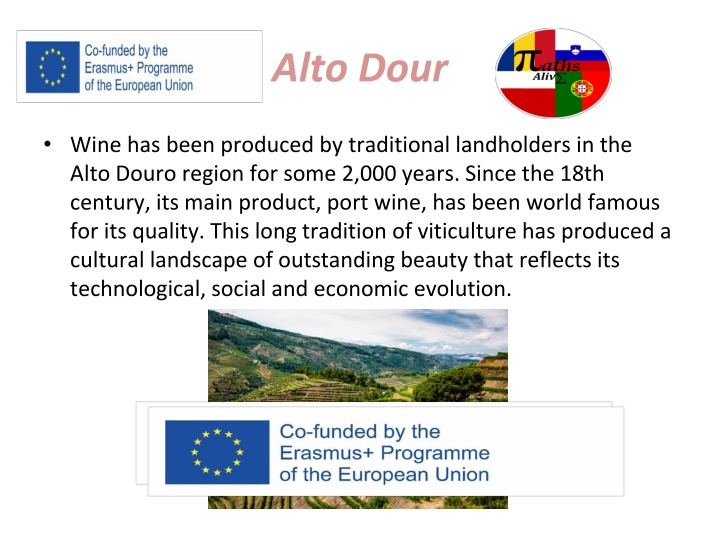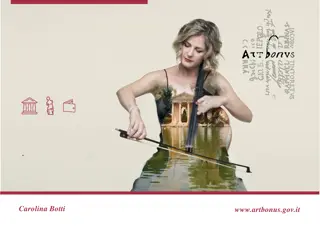Rich Cultural Heritage and Natural Wonders in Europe
Explore the historical Alto Douro Wine region with its 2,000-year-old tradition of producing world-famous port wine. Delve into the fascinating Danube Delta, home to diverse wildlife and a unique river delta landscape. Discover the mystical Scotch Caves and their karstic phenomena. Uncover the charm of the Wooden Church in Haczow, a Gothic marvel from the 15th century.
Download Presentation

Please find below an Image/Link to download the presentation.
The content on the website is provided AS IS for your information and personal use only. It may not be sold, licensed, or shared on other websites without obtaining consent from the author.If you encounter any issues during the download, it is possible that the publisher has removed the file from their server.
You are allowed to download the files provided on this website for personal or commercial use, subject to the condition that they are used lawfully. All files are the property of their respective owners.
The content on the website is provided AS IS for your information and personal use only. It may not be sold, licensed, or shared on other websites without obtaining consent from the author.
E N D
Presentation Transcript
Alto Dour Wine has been produced by traditional landholders in the Alto Douro region for some 2,000 years. Since the 18th century, its main product, port wine, has been world famous for its quality. This long tradition of viticulture has produced a cultural landscape of outstanding beauty that reflects its technological, social and economic evolution.
Interesting facts about Alto Douro Wine has been grown in Alto Douro, the 'high Douro', for more than 2,000 years. The Romans realized the ideal conditions of the dry-hot climate and planted vines here.
Danube Delta It s a river delta, the youngest place in Romania Probably 40 percent of the Delta was built in the last 1000 years The Danube branches into three main distributes into the delta, Chilia, Sulina, and Sfantul Gheorghe
Interesting facts about Danube Delta Danube Delta had a big population of wild horses, but the humans killed the most of them for their meat. Now the environmentalists prevent it.
Scotch Caves This exceptional system of limestone caves comprises collapsed dolines, some 6 km of underground passages with a total depth of more than 200 m, many waterfalls and one of the largest known underground chambers. The site, located in the Kras region (literally meaning Karst), is one of the most famous in the world for the study of karstic phenomena.
Interesting facts about scotch caves The river flowing through the underground canyon turns north- west before the Cerkvenik Bridge and continues its course along the Hankejev kanal (Hanke's Channel). This underground channel, first explored at the end of the 19th century, is approximately 3.5 kilometres long, 10 to 60 metres wide and over 140 metres high. At some points, it expands into huge underground chambers. The largest of these is the Martelova dvorana (Martel's Chamber); with a volume of 2.2 million cubic metres, it is considered the largest discovered underground chamber in Slovenia and one of the largest in the world. It is interesting to note that an underground canyon of such dimensions ends with a relatively small siphon: one that cannot deal with the enormous volume of water that pours into the cave after heavy rainfall, causing major flooding, during which water levels can rise by more than one hundred metres.
Wooden church in Haczw Assumption of Holy Mary Church in Hacz w - a Gothic, wooden church located in the village of Hacz w from the fifteenth-century, which together with different churches is designated as part of the UNESCO Wooden Churches of Southern Lesser Poland.
Presentation made by: Diogo Santos - Portugal Ema Klancnik - Slovenia Justyna Macios - Poland Marcelina Szmyd - Poland Soma Orosz - Romania























